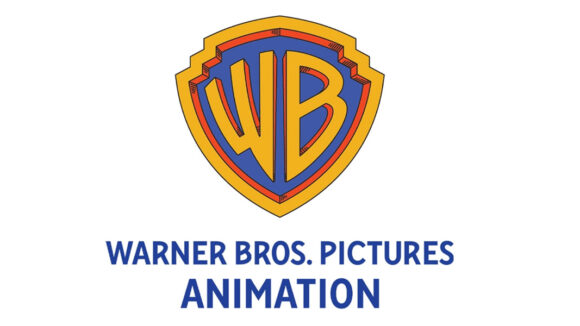

Third Time’s The Charm: Warner Bros. Relaunches Its Feature Animation Division Yet Again
Warner Bros. Discovery has relaunched its feature animation unit, labeling it Warner Bros. Pictures Animation (WBPA). The unit was formerly known as Warner Animation Group (2013-2023), and before then, Warner Bros. Feature Animation (1994-2004).
Why the name change? No one can say for certain, but the new name presumably signals a fresh David Zaslav-era start for the company’s feature animation unit, which had been treading water for years. The prior Warner Animation Group’s last bona fide hit was The Lego Movie in 2014, which also happened to be the first film produced by the division. The new name may also have come at the suggestion of Bill Damaschke, who was confirmed as the division’s new top executive last month.

What is Bill Damaschke’s vision for WBPA? His goal is to eventually produce two theatrical releases annually. Damaschke aims to launch original concepts, as well as create films around library IP, but his key focus will be to put an emphasis on filmmaker-driven films. He cited successful animated films the company has made in the past, such as The Iron Giant, Space Jam, Corpse Bride, Polar Express, Happy Feet, and The Lego Movie, and recently told Deadline that those are “benchmark films that broke new ground, new technology, new ways of telling stories and were successful, artistically and commercially.”
Damaschke added “[Warner Bros Motion Picture Group heads] Pamela Abdy and Michael De Luca are inspiring producers and filmmakers themselves who are focused on directors and writers as part of their studio leadership and we plan to follow their creative lead at WBPA.”
How is that different from the previous Warner Animation Group? With the exception of the Lego franchise, the earlier WAG couldn’t find a path forward with original ideas, and shifted its strategy to making films with WB-owned IP, such as Scoob!, Tom & Jerry, Space Jam: A New Legacy, and DC League of Super-Pets.
What are WBPA’s current projects? Damaschke is new to the job so the studio’s existing pipeline is comprised largely of projects that were already in the works before he arrived. Among these are Coyote vs. Acme (directed by Dave Green), The Cat in the Hat (directed by Erica Rivinoja and Alessandro Carloni), and a Flintstones origin movie Meet the Flintstones (written by Aaron Horvath and Michael Jelenic). The latter two projects are still early enough that Damaschke will leave his imprint on the finished films.
The studio also announced a few days ago that it has signed a first-look deal with Locksmith Animation, the U.K. company responsible for Ron’s Gone Wrong. Locksmith also signed a first-look deal in 2019 with Warner Bros., which didn’t result in any produced films. Under the new deal, Locksmith is currently developing two new projects: the musical-comedy Bad Fairies with a screenplay by Deborah Frances-White (host of The Guilty Feminist podcast) and director Megan Nicole Dong (creator of Centaurworld), and an adaptation of Marissa Meyer's novel series The Lunar Chronicles, with Kalen Egan and Travis Sentell writing the screenplay, and Noëlle Raffaele (director, DC Superhero Girls) attached to direct.
How large is Warner Bros. Pictures Animation? Currently, Damaschke oversees a core staff of around 90 people in Los Angeles. There is no indication on whether that crew will shrink or expand in the coming years. WB uses third-party vendor studios for animation production, including Animal Logic (DC League of Super-Pets), Framestore (Tom & Jerry), and DNEG ( Coyote vs. Acme).
Amid’s View:
Pardon me for being skeptical of any dedicated Warner Bros. feature animation program. Through various management regimes, the company has repeatedly launched and abandoned feature animation efforts – first with Warner Bros. Feature Animation and again with Warner Animation Group.
Warner Bros. is a curious oddity among the majors. As Damaschke points out above, the studio has had some notable hits. But every time they have an inkling of a good idea or do something notable, they shoot themselves in the foot. Think back to when they produced one of the greatest animated features of the modern era – Brad Bird’s The Iron Giant – and then followed it up with one of the greatest marketing whiffs of all-time. That historic blunder soured the entire industry on the company and made clear that their feature animation game was not to be taken seriously.
Then, when they started Warner Animation Group, they announced that they were going to put together a “think tank”, a nod to Pixar’s storied brain-trust. They brought aboard Phil Lord and Chris Miller (an undeniably smart move) and then they added to that think tank a group of live-action writers and filmmakers who seemed to lack even the most remote understanding of how animation works, much less any genuine passion or appreciation for the art form. Big surprise that this group was responsible for joyless duds like Storks and Smallfoot, and their outsized influence on the division sealed WAG’s fate as a second-rate contender.
And try this on for size: the only time Warner Bros. has won the best animated feature Oscar was for George Miller’s Happy Feet, which was produced during a period when WB had shuttered its internal feature animation division and was producing animation directly through Warner Bros. Pictures. This interim period also resulted in projects like The Polar Express, Corpse Bride, and A Scanner Darkly, all of which are somehow preferable to the type of material WB produces when it’s actually operating an animation division:
— Hanna-Barbera ScreenCaps (@HannaBarberaCap) June 9, 2023
Now, they’re starting again from scratch, this time with Bill Damaschke, an executive who left Dreamworks at its creative nadir – and who is blamed by more than a few people for leading the company to that point. Perhaps the third time’s the charm. Or perhaps Warner Bros. is meant to forever remain the bungling feature animation studio that can’t quite get its act together.

.png)